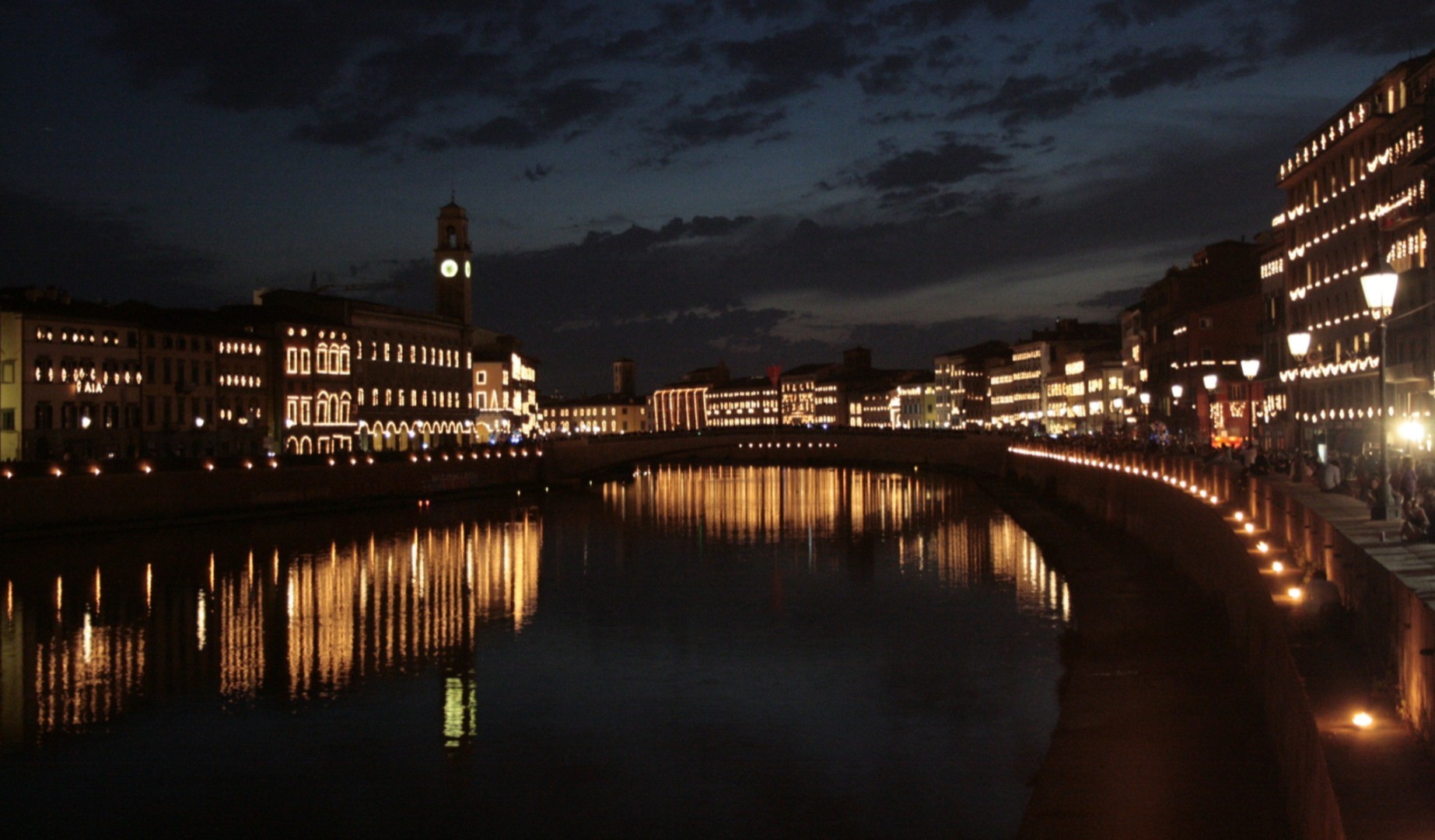The Luminara of San Ranieri in Pisa
15-10-2020
 Every year, on the night of June 16, Pisa lights up with thousands of wax candles, creating a suggestive and unique effect.
Every year, on the night of June 16, Pisa lights up with thousands of wax candles, creating a suggestive and unique effect.Traditionally, the Pisans celebrate the patronal feast of June 17 in honor of San Ranieri with this unique lighting. At dusk there are about seventy thousand wax candles that are placed in smooth glass glasses and hung in white wooden frames (called linen in jargon), modeled in such a way as to enhance the shapes of buildings, bridges, churches and of the towers that overlook the Pisan riverside. The only exception is the Piazza dei Miracoli, illuminated with oil pans placed along the perimeters of the Cathedral and the Baptistery and on the battlements of the Tower. Many floating candles are also placed on the waters of the Arno and entrusted to the current, creating a play of light and reflections. For many years the evening has ended with a series of fireworks fired around midnight from the Ponte della Cittadella, as well as, in recent years, also by some barges arranged on the Arno river.
The tradition of the Luminara dates back to 25 March 1688, when the urn with the body of Ranieri degli Scaccieri, patron saint of the city, who died in 1161, was solemnly placed in the chapel of the Pisa Cathedral. memorable city festival, from which, according to tradition, the triennial "illumination" began which then in the nineteenth century took the name of Luminara. On 25 March 1688, the urn containing the body of Ranieri degli Scaccieri, patron saint of the city, who died in holiness in 1161, was placed in the chapel of the Cathedral of Pisa, dedicated to the Incoronata. occasion for a memorable city festival, from which, according to tradition, the triennial illumination of Pisa began, which was first called illumination and then, in the nineteenth century, Luminara.
The B&B Casa Formica is located just 7 km from the historic center of Pisa. The city is easily accessible by car and offers some convenient parking areas
